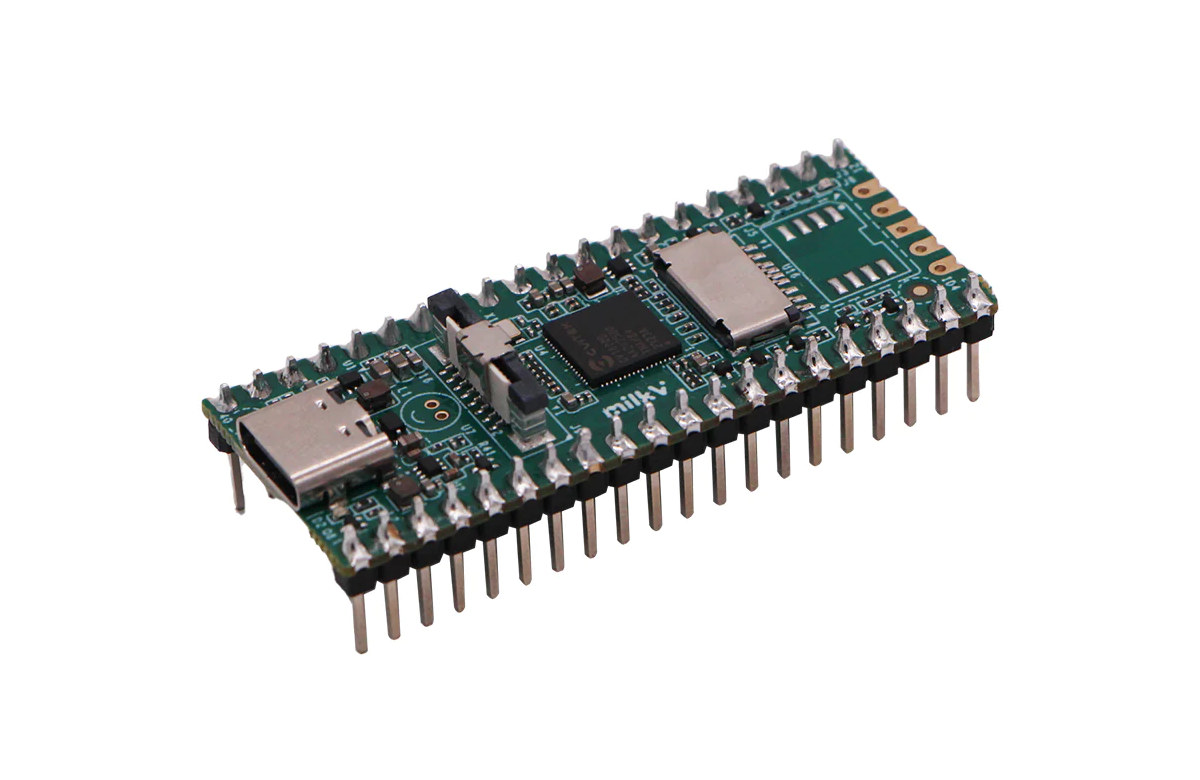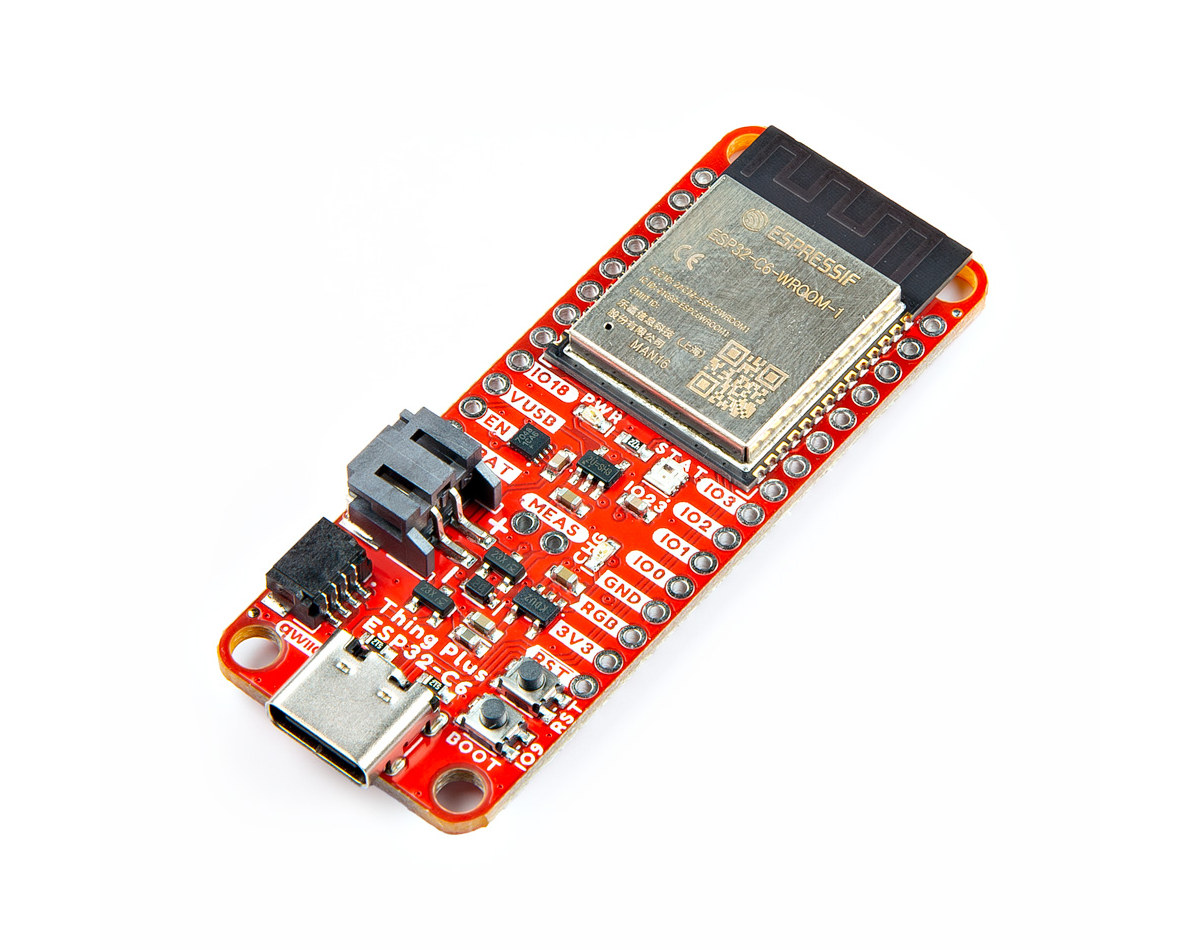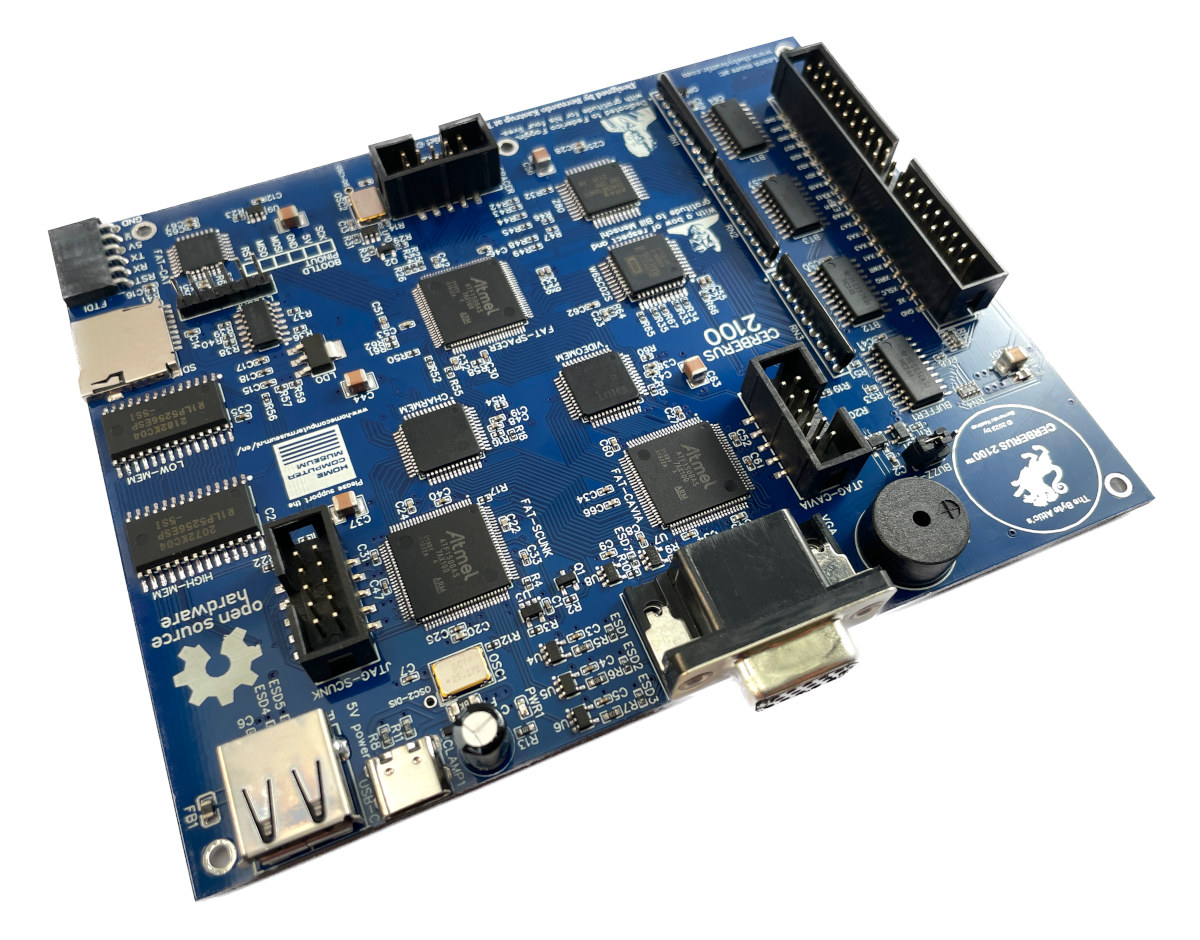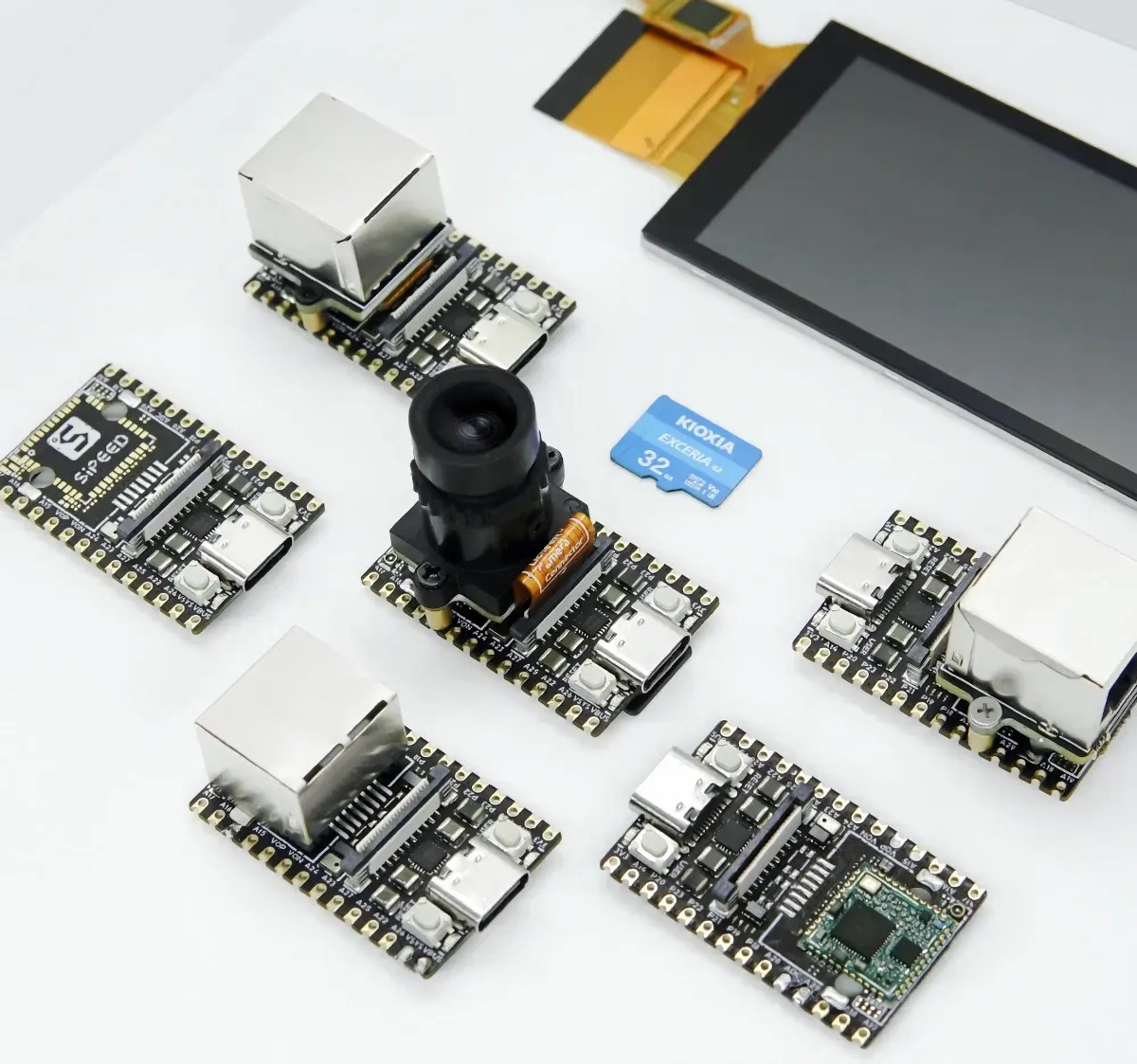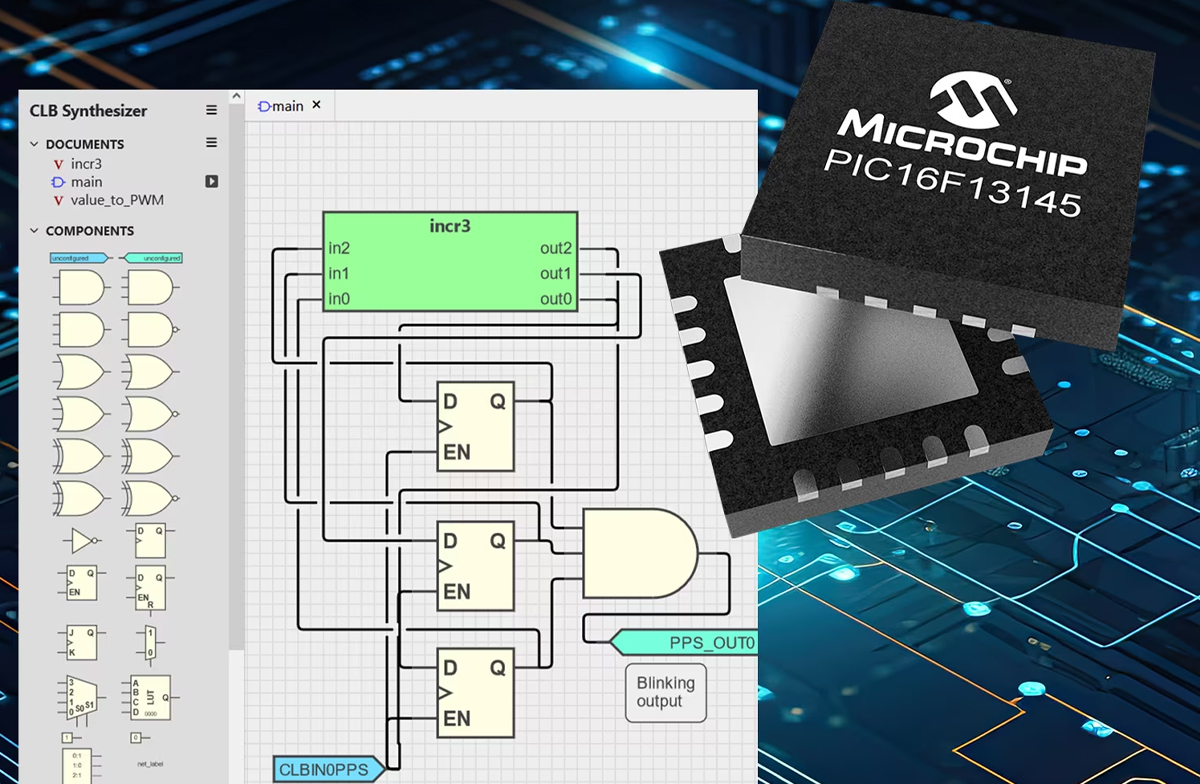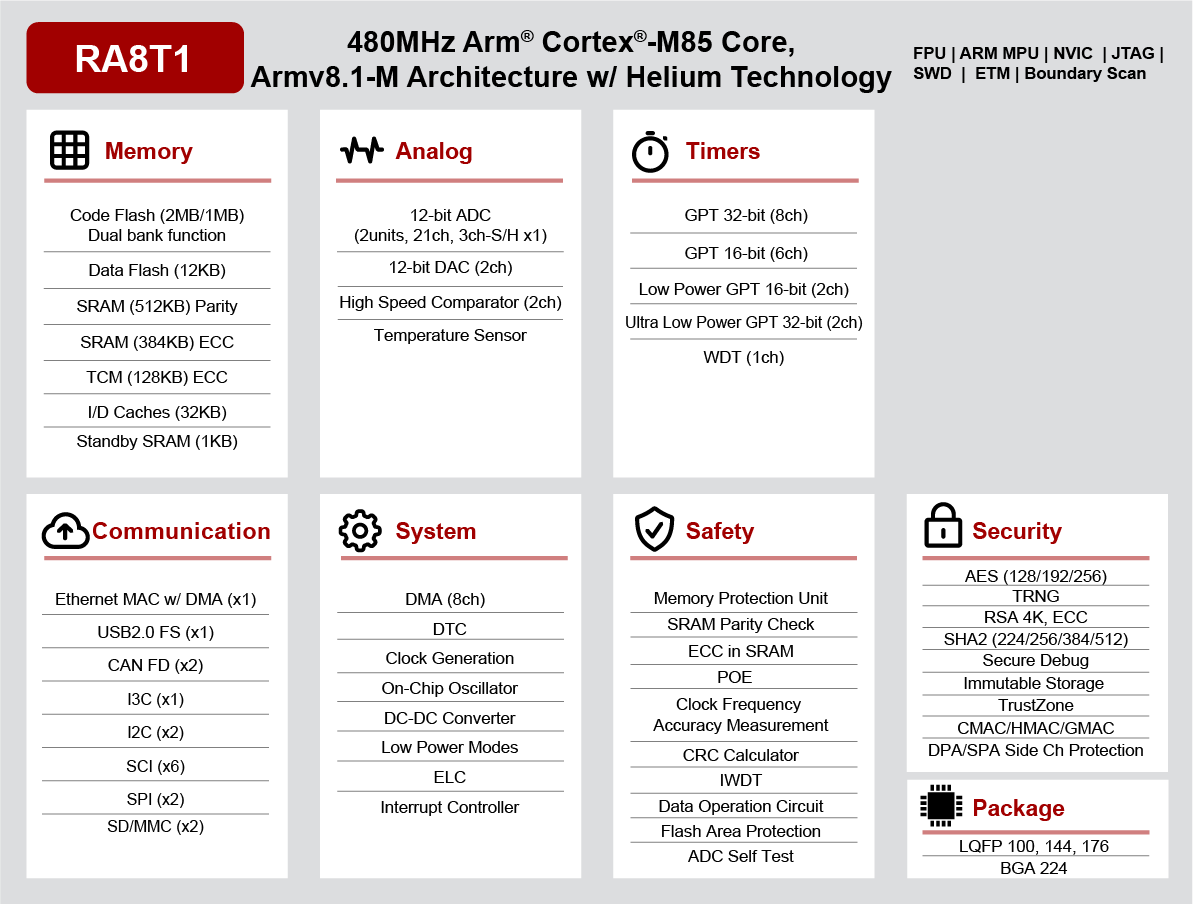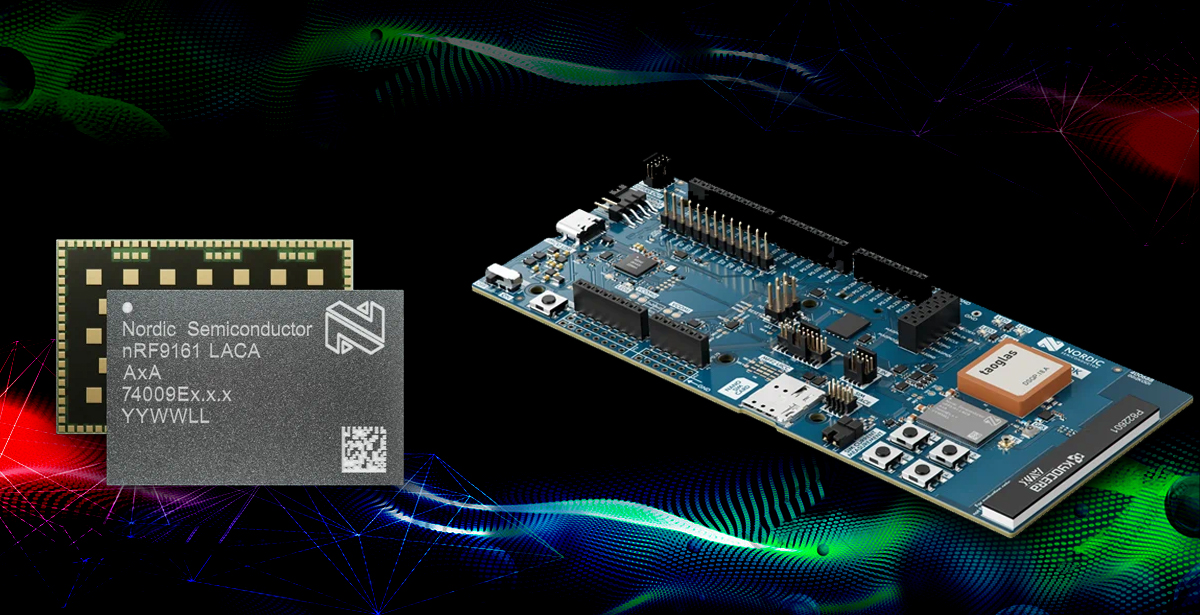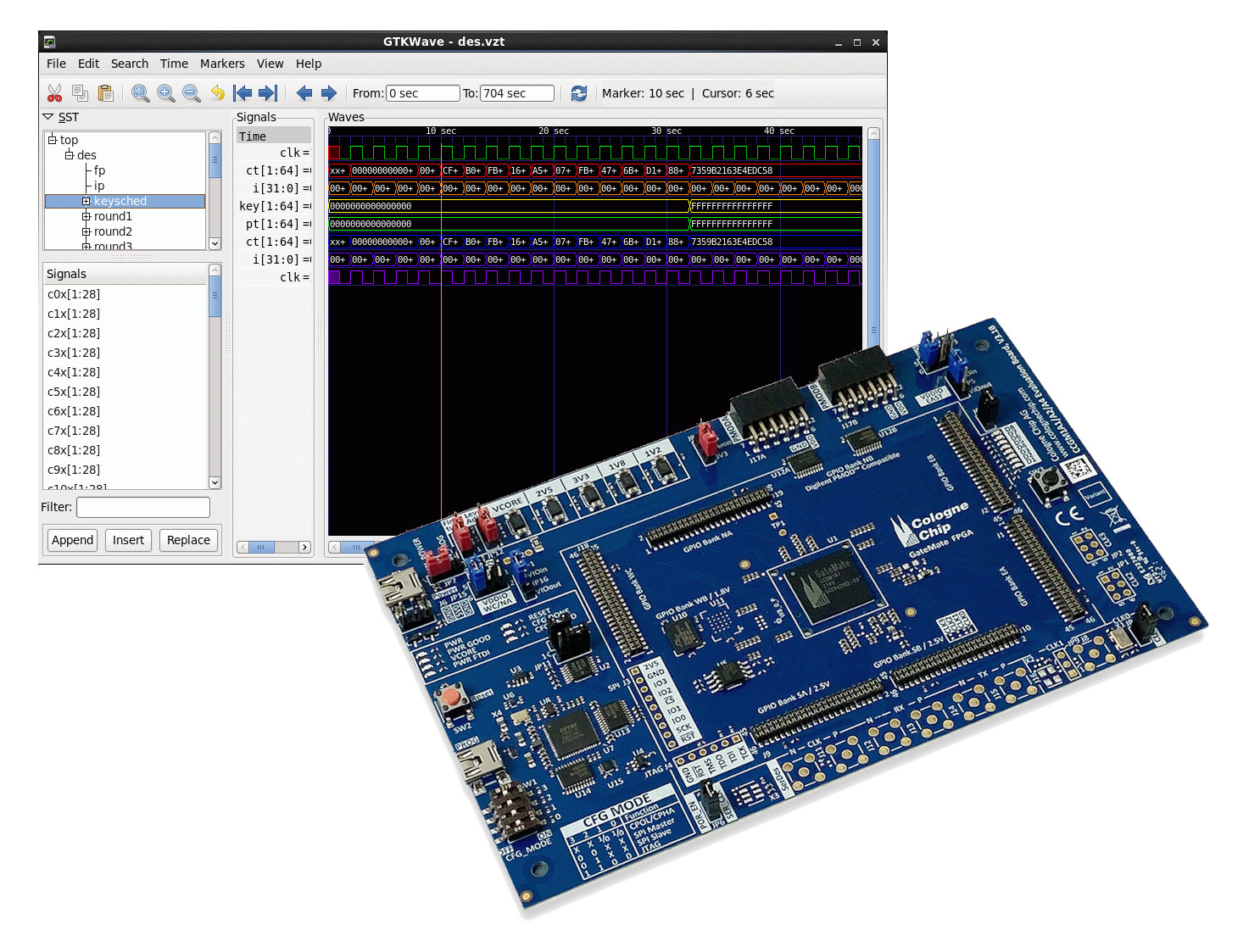Duo 256M is a small board powered by SOPHGO SG2002 multi-architecture Arm/RISC-V/8051 SoC with 256MB of on-chip RAM and a 1 TOPS NPU, a microSD card for storage, a camera connector, a USB-C port for power and programming, and two headers for GPIO expansion. We covered the SOPHGO SG2002 (and SG2000) Arm+RISC-V+8051 AI SoC earlier this month saying a couple of boards were expected very soon. We’ve already covered Sipeed LicheeRV Nano with optional Ethernet or WiFi 6, and now we’ll look at the Duo 256M designed by Milk-V Technology in more detail since it’s available now. Duo 256M specifications: SoC – SOPHGO SG2002 Main core – 1GHz 64-bit RISC-V C906 or Arm Cortex-A53 core (selectable) Minor core – 700MHz 64-bit RISC-V C906 core Low-power core – 25 to 300MHz 8051 MCU core NPU – 1 TOPS INT8, supports BF16 Integrated 256MB DDR3 (SiP) Storage MicroSD card slot 32Gbit NAND […]
SparkFun Thing Plus – ESP32-C6 board comes with 16MB flash, LiPo battery support
SparkFun has launched yet another ESP32-C6 board with the “Thing Plus – ESP32-C6” based on the ESP32-C6-WROOM-1-N16 module with 16MB flash and a PCB antenna and range of I/Os and power options. The board features 28 through holes with up to 23 multi-function GPIOs and a Qwicc connector for expansion, and supports 5V or LiPo battery power through respectively a USB-C port a 2-pin JST connector combined with a charging chip, and a fuel gauge. SparkFun Thing Plus – ESP32-C6 specifications: Wireless module – ESP32-C6-WROOM-1-N16 MCU – ESP32-C6 32-bit single-core RISC-V microcontroller with 2.4 GHz WiFI 6, Bluetooth 5 LE, and 802.15.4 radio (Zigbee and Thread); Matter-compatible Storage – 16 MB flash PCB Antenna Storage – MicroSD card slot USB – 1x USB Type-C port for power and programming Expansion 12-pin + 16-pin headers with 23x multifunctional GPIOs Up to 7x 12-bit ADC channels Up to 2x UART channels (with […]
CERBERUS 2100 is a BASIC-programmable educational board with Z80 and 6502 8-bit CPUs
Olimex has just announced the launch of the CERBERUS 2100 open-source hardware, educational, multi-processor 8-bit computer with both Z80 and 6502 CPUs, as well as a Microchip AVR processor serving as an I/O controller. The CERBERUS 2100 features several CPLD and is fully programmable from the lowest level (individual gates and flip-flops) up to BASIC interpreters running on the Z80 and 6502 CPUs. Olimex did not design this themselves as the hardware design is from Bernardo Kastrup (aka TheByteAttic), while BASIC interpreters were written by Alexander Sharikhin (6502) and Dean Belfield (Z80). CERBERUS 2100 specifications: Processors Zilog Z80 8-bit microprocessor at 4 or 8 MHz (user selectable) Western Design Center W65C02S 8-bit microprocessor at 4 or 8 MHz (user selectable) “FAT-CAT” (Custom ATmega328pb) Microchip 8-bit AVR ATMega328PB microcontroller at 16 MHz CPLDs (ATF1508AS-7AX100) FAT-SCUNK (Scan CoUNter and clocK) and FAT-CAVIA (ChAracter Video Adapter) for video circuit connected to a 25.175 […]
LicheeRV Nano – A low-cost SG2002 RISC-V and Arm camera and display board with optional WiFi 6 and/or Ethernet
When I wrote about the SOPHGO SG2002 (and SG2000) RISC-V, Arm, and 8051 AIoT processor yesterday, I noted several boards were in development, but I had not noticed the Sipeed LicheeRV Nano (Beta) was already available for sale, so let’s have a closer look. It’s an inexpensive, tiny camera and display board running Linux with optional support for WiFi 6 and 10/100M Ethernet connectivity which somewhat reminds me of the Breadbee SBC based on MStar MSC313E Camera SoC. Sipeed also provides accessories such as a camera module and a touchscreen display to quickly get started. LicheeRV Nano specifications: SoC – SOPHGO SG2002 Main core – 1GHz 64-bit RISC-V C906 or Arm Cortex-A53 core (selectable) Minor core – 700MHz 64-bit RISC-V C906 core Low-power core – 25 to 300MHz 8051 MCU core NPU – 1 TOPS INT8, supports BF16 Integrated 256MB DDR3 (SiP) Storage – MicroSD card slot and SD NAND […]
Microchip introduces PIC16F13145 Series MCUs with customizable logic
Microchip recently introduced the PIC16F13145 series of 8-bit MCUs featuring a Configurable Logic Block (CLB). This allows users to create custom hardware-based logic functions within the MCU. This approach lowers the BOM costs and boosts performance. Last year, we saw Microchip introduce PIC32CZ Arm MCU with a Hardware Security Module (HSM) and before that, we saw they launched LAN8650/LAN8651 10BASE-T1S single-pair Ethernet Controllers. Feel free to check those out if you are interested in the topics. Microchip PIC16F13145 Series MCU Specification: 32MHz PIC16 CPU core Up to 1KB User SRAM for application data Up to 14KB Flash memory with code protection features CLB Capabilities: Up to 32 basic logic elements – AND/OR/NAND/NOR gates, buffers/inverting buffers, D/JK flip-flops, multiplexers, 4-input LUT Dynamic configuration for on-the-fly changes Tri-state logic capability Inputs/outputs from software, I/O pins, and PIC® peripherals (ADC, PWM, DAC, etc.) Less than 6 ns BLE propagation delay at 5.5V (typical) […]
Renesas RA8T1 Cortex-M85 MCU targets motor control applications
It took a while before Renesas released its first Arm Cortex-M85 microcontroller (RA8M1) in October 2023, but the company has now launched the RA8T1 Cortex-M85 MCU for motor control just a few weeks after announcing the RA8D1 for HMI applications. The RA8T1 group is the third Cortex-M85 microcontroller family from Renesas with a feature set optimized for motor control and leveraging machine learning through Arm Helium technology and a DSP for predictive maintenance requirements for motors. Renesas RA8T1 key features and specifications: MCU core – Arm Cortex-M85 clocked at 480 MHz with Helium MVE (M-Profile Vector Extension) with 32KB I/D caches, 12KB data flash Memory & Storage 1MB SRAM including 128KB TCM 1MB to 2MB Flash memory 2x SD/MMC host interfaces (SDHI) Communication interfaces Ethernet MAC with DMA USB – 1x USB 2.0 Full Speed interface 2x CAN-FD Up to 6x SCI (UART, Simple SPI, Simple I2C) 2x SPI up […]
Nordic’s nRF9161 SiP and DK support cellular IoT and DECT NR+ non-cellular 5G technology
Nordic Semiconductor recently announced the availability of the nRF9161 system in package (SiP) and pre-certified Development Kit designed to power both cellular IoT and non-cellular 5G technologies. This new device can connect to LTE-M, NB-IoT, and DECT NR+ networks while maintaining long battery life, better location tracking, and strong connectivity. Additionally, Nordic offers support through their nRF Connect SDK and the Nordic Developer Academy. The nRF9161 SiP is an improved version of the nRF9160 SiP, which has been the basis for various projects like the Actinius Icarus SoM DK, Conexio Stratus, nRF9160 Feather LTE IoT and GPS Board, Ruuvi Node, and many other projects. Feel free to check those out if interested. The press release mentions that this new chip is an update of the nRF9160 and includes features like an Arm Cortex-M33 processor, 1 MB flash, 256 KB RAM, along with SPI, I2C, UART, PWM, and a 12-bit ADC […]
Cologne Chip releases an open-source integrated logic analyser (ILA) for GateMate FPGA chips
Cologne Chip’s “Integrated logic analyzer” (ILA) project is an open-source Verilog implementation of a logic analyzer running on the company’s GameMate A1 FPGA and designed to capture internal signals. When we first covered the GameMate A1 FPGA we noted Cologne relies on the open-source Yosys framework coupled with a proprietary, but free-of-charge, place & route tool contrary to most other FPGA vendors that only offer closed-source proprietary development tools. The German company has now released the GateMate integrated logic analyzer project to help customers debug their FPGA designs. The project includes the digital circuit of the ILA designed in the hardware description language Verilog and a Python program (ILA Control Program) used to configure the configuration of the ILA from the design under test (DUT) and provide an interface with the user during the debugging process. The user will also need a GateMate FPGA toolchain and GTKWave open-source program to […]


